Various studies show successful shrimp production
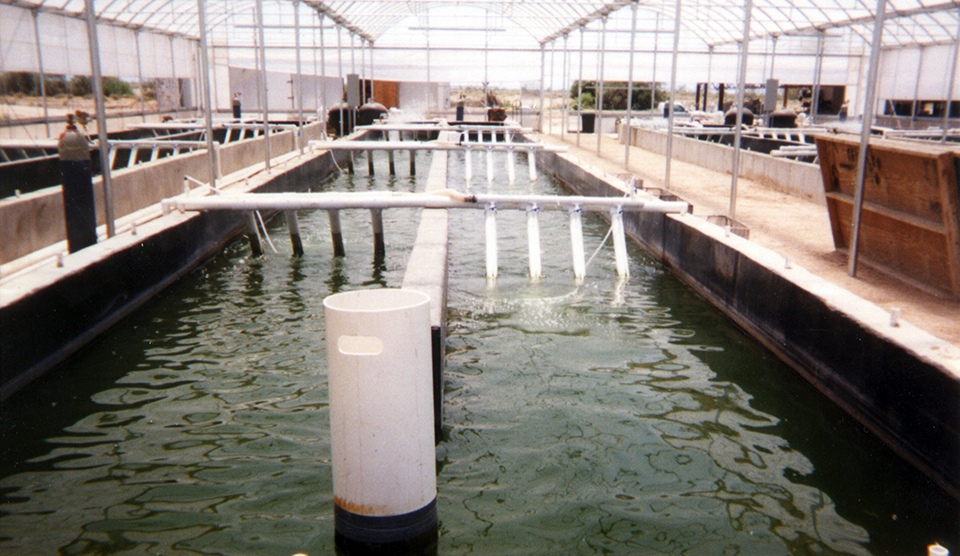
Many shrimp farms still use substantial water exchange, often based on a set schedule with occasional emergency flushes, rather than changing pond conditions. Yet reducing water exchange to reduce potential negative environmental impact does not have to negatively affect shrimp production. High shrimp yields of 7 metric tons (MT) per hectare are possible without water exchange.
The storage of pond water for reuse with subsequent crops is already successfully implemented at Belize Aquaculture, Ltd. Many shrimp producers also incorporate water-reuse technology to reduce the risk of viral disease outbreaks involving White Spot Syndrome Virus and other pathogens.
Biosecure greenhouse nursery
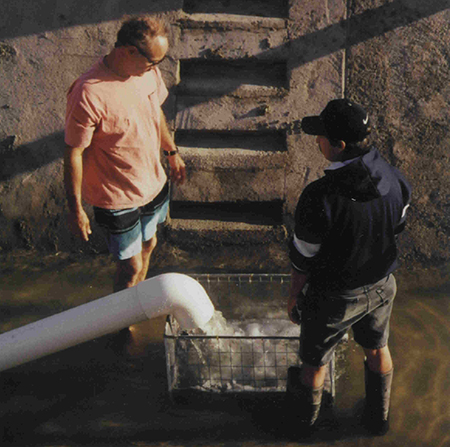
In nursery studies at the Texas Agricultural Experiment Station in Corpus Christi, Texas, USA, both exotic Litopenaeus vannamei and native Farfantepenaeus aztecus shrimp species were raised with reduced water discharge in greenhouse raceways with a bottom area of 68.5 square meters. The only water added throughout the tests was that needed to compensate for evaporation, leaking, and losses to sand filter backwash.
Water was treated with chlorine at 10 ppm before stocking. Postlarvae were initially fed a 50 percent protein diet supplemented with artemia nauplii for a few days, then switched to a 45 percent protein diet with 10 percent squid meal for the remainder of the study.
A maximum yield of 2.78 kilograms per square meter with 100 percent survival was achieved when L. vannamei were intensively stocked at about 2,200 PL per square meter for 50 days with water discharge of 1.1 percent per day. A 100 percent survival was obtained when F. aztecus were kept at a density of 4,900 per cubic meter for 34 days with limited water discharge of less than 1 percent per day. Feed conversion ratios were below 1 for all trials.
Tank production with zero exchange
To evaluate the feasibility of producing market-size L. vannamei under limited-discharge conditions, initial salinity was adjusted to 15 ppt, and freshwater was added to avoid evaporative salinity increases.
Eighteen aerated 10.5-square-meter tanks were stocked with juveniles of 1.69-gram weight at a density of 40 per square meter. The shrimp were fed twice a day for 94 days, with a 21 percent protein feed, a 31 percent-protein feed, or the 21 percent protein feed plus bacteria-enriched culture water (21 percent+). The commercial bacterial product was applied 5 times per week per manufacturer specifications.
Survival was high in all treatments (83 to 99 percent). Mean final weight was lowest in the 21 percent-protein-feed group (11.69 grams) and highest for the shrimp that received 31 percent-protein feed (14.04 grams). The feed conversion ratio for the 31 percent treatment was 1.75 – significantly lower than 2.15 for the 21 percent-protein feeding or 2.19 for the group that received feed with the bacterial product. Addition of the bacterial supplement did not significantly improve mean final weight or FCR of shrimp fed the low-protein diet. Bacteria applications also did not significantly improve water quality in treated tanks.
In a more recent study conducted in the same tank system, 0.68-gram juvenile L. vannamei were stocked at 50 per square meter. The shrimp were fed a 30 percent or 40 percent protein commercial diet four times per day. Rations of the 40 percent protein diet were fed on an equal nitrogen basis (e.g., daily ration was 75 percent of the ration provided to the shrimp fed the 30 percent-protein food).
After 111 days, shrimp fed the 30 percent and 40 percent protein diets had respective harvest sizes of 17.97 and 19.34 grams, mean survival rates of 94.5 and 92.4 percent, mean weekly growth of 1.15 and 1.24 grams, and FCR of 2.44 and 1.72. Although the high-protein diet was more expensive (about U.S. $0.56 vs. $0.49 per kilogram) than the 30 percent-protein feed, the cost per kg of shrimp produced was lower ($0.97 vs. $1.19 per kilogram).
Lined ponds
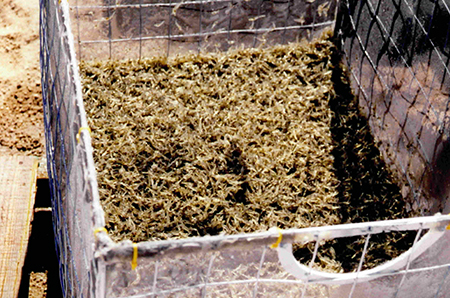
A similar study was conducted to evaluate the effect of zero discharge on shrimp performance and water quality in two 1,700-square-meter ponds lined with high-density polyethylene and stocked 40 per square meter with 0.69-gram L. vannamei juveniles. Pond aeration was provided by paddlewheel aerators and water was treated with chlorine before stocking. The shrimp were fed commercially available 21 and 31 percent protein diets. Freshwater was added to maintain salinity at 20 ppt.
A third pond was stocked with 3.49-gram juveniles at 30 per square meter from the same population seven weeks after the first two ponds were stocked. These shrimp were fed four times per day with 45 percent-protein diet. Only a limited volume of water was released throughout the study due to heavy rains.
The higher-density ponds were harvested after 100 days, while the lower-density pond was harvested after 50 days. No significant differences were found in daily and weekly water quality among the three ponds. Shrimp survival, mean final weight and FCR in the 21 percent and the 31 percent treatments were 86 percent and 81.4 percent, 16.1 grams and 20.2 grams, and 1.86 and 1.75, respectively. Mean weight in the 45 percent treatment was 16.8 grams, with 96.1 percent survival and an excellent 1:1 FCR value.
Conclusion
Results of these and other studies suggest that L. vannamei can be raised at high densities with limited water discharge, with acceptable survival, growth rates and yields using commercial diets. This technology allows farmers to minimize the introduction of water-borne diseases and reduce effluent releases.
(Editor’s Note: This article was originally published in the June 2001 print edition of the Global Aquaculture Advocate.)
Now that you've reached the end of the article ...
… please consider supporting GSA’s mission to advance responsible seafood practices through education, advocacy and third-party assurances. The Advocate aims to document the evolution of responsible seafood practices and share the expansive knowledge of our vast network of contributors.
By becoming a Global Seafood Alliance member, you’re ensuring that all of the pre-competitive work we do through member benefits, resources and events can continue. Individual membership costs just $50 a year.
Not a GSA member? Join us.
Author
-
Tzachi M. Samocha, Ph.D.
TAES
Shrimp Mariculture Research Facility
Corpus Christi, Texas, USA[117,100,101,46,99,99,117,109,97,116,46,110,111,99,108,97,102,64,97,104,99,111,109,97,115]
Tagged With
Related Posts
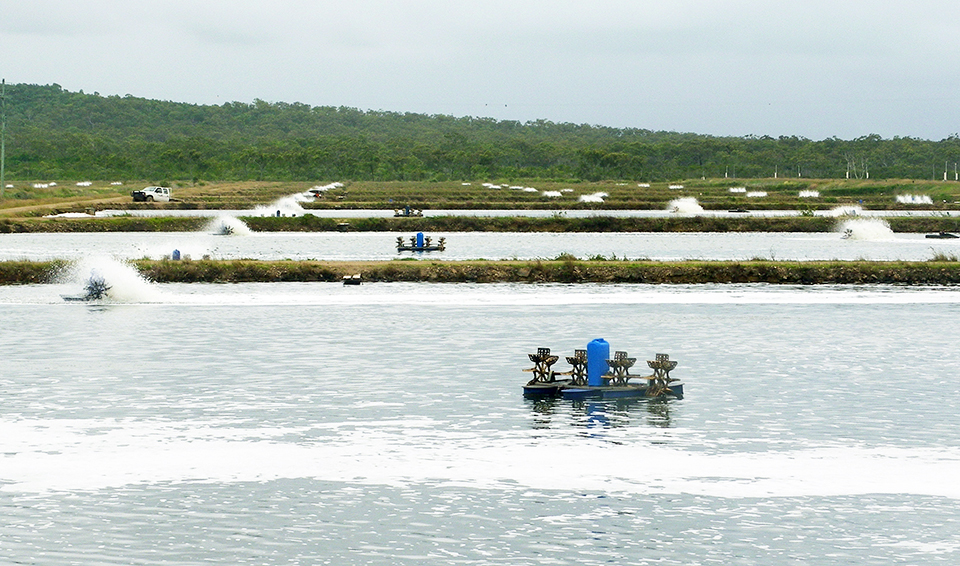
Responsibility
Examining energy use in shrimp farming
While intensive shrimp farms in Australia and elsewhere are sensitive to rising energy prices, global intensification and farming innovations have led to significant improvements in shrimp farm energy efficiency. Important among the changes was the global switch to zero-exchange production of white shrimp.
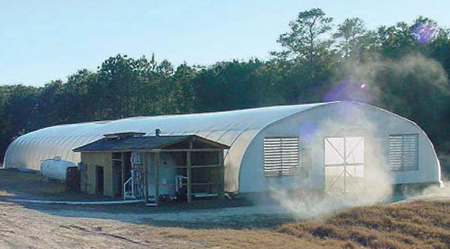
Intelligence
Greenhouse raceways: A consideration for super intensive shrimp production
Greenhouse raceways can be managed with zero to minimal water exchange, thus greatly reducing environmental impacts due to effluent discharge.
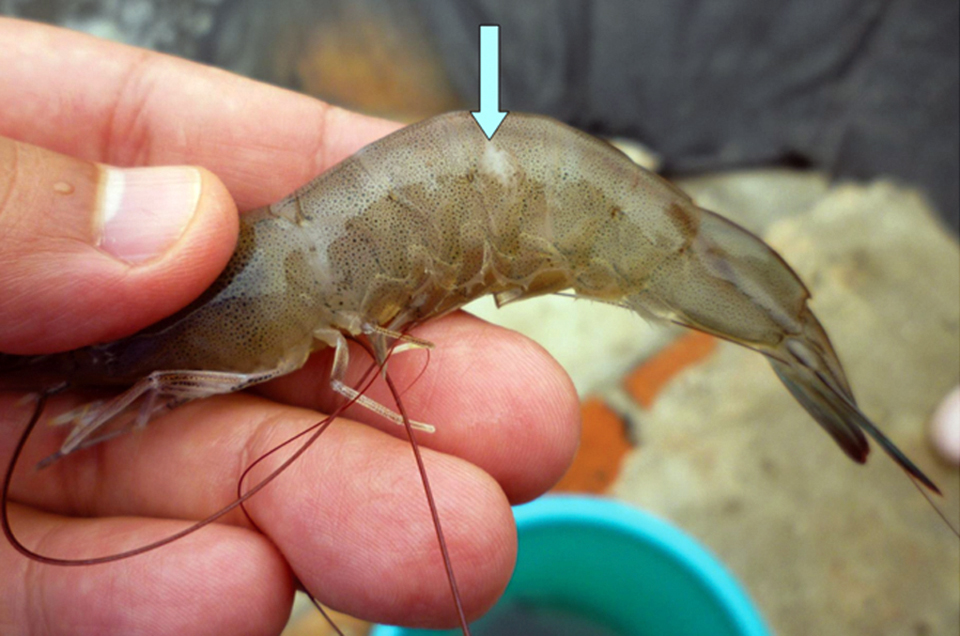
Health & Welfare
New procedure controls TSV in white shrimp
The authors have established a procedure to reduce the impacts of Taura Syndrome Virus in the culture of Pacific white shrimp. The procedure focuses on avoiding the molting process of shrimp by limiting culture conditions.
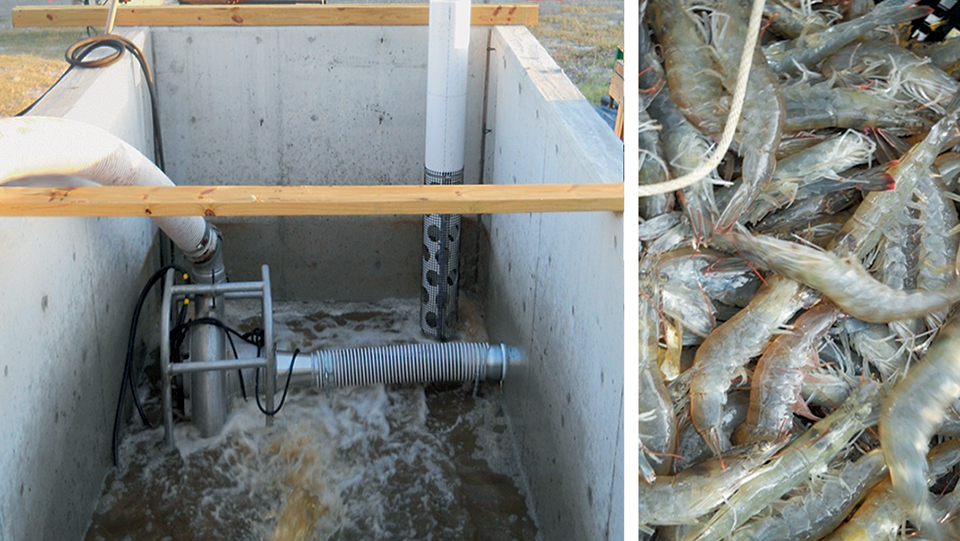
Health & Welfare
Studies advance intensive shrimp culture in zero-exchange biofloc raceways
In ongoing trials of greenhouse-enclosed intensive biofloc shrimp culture systems, the objectives of a 2012 study were to evaluate the performance of fast-growth shrimp fed a commercial diet formulated for high-density culture systems, and to further evaluate injector performance in the zero-exchange, super-intensive raceways.


